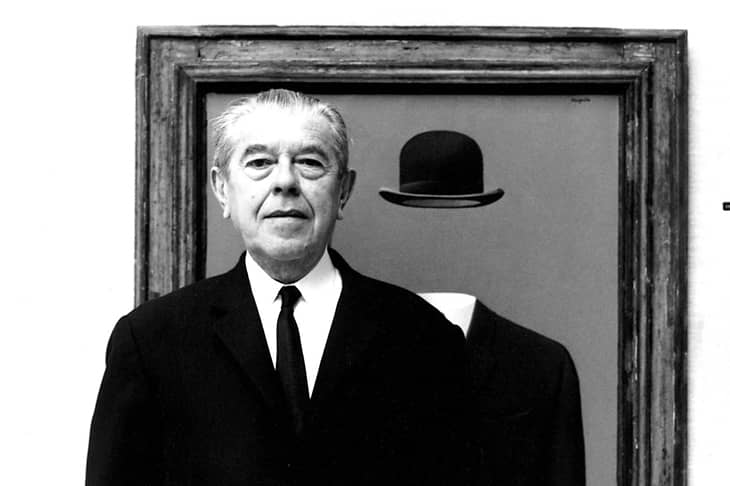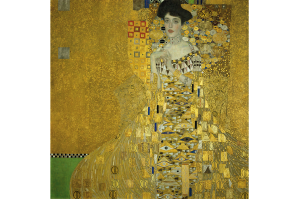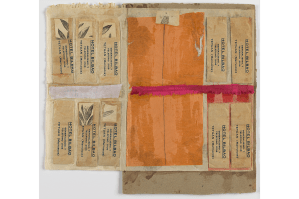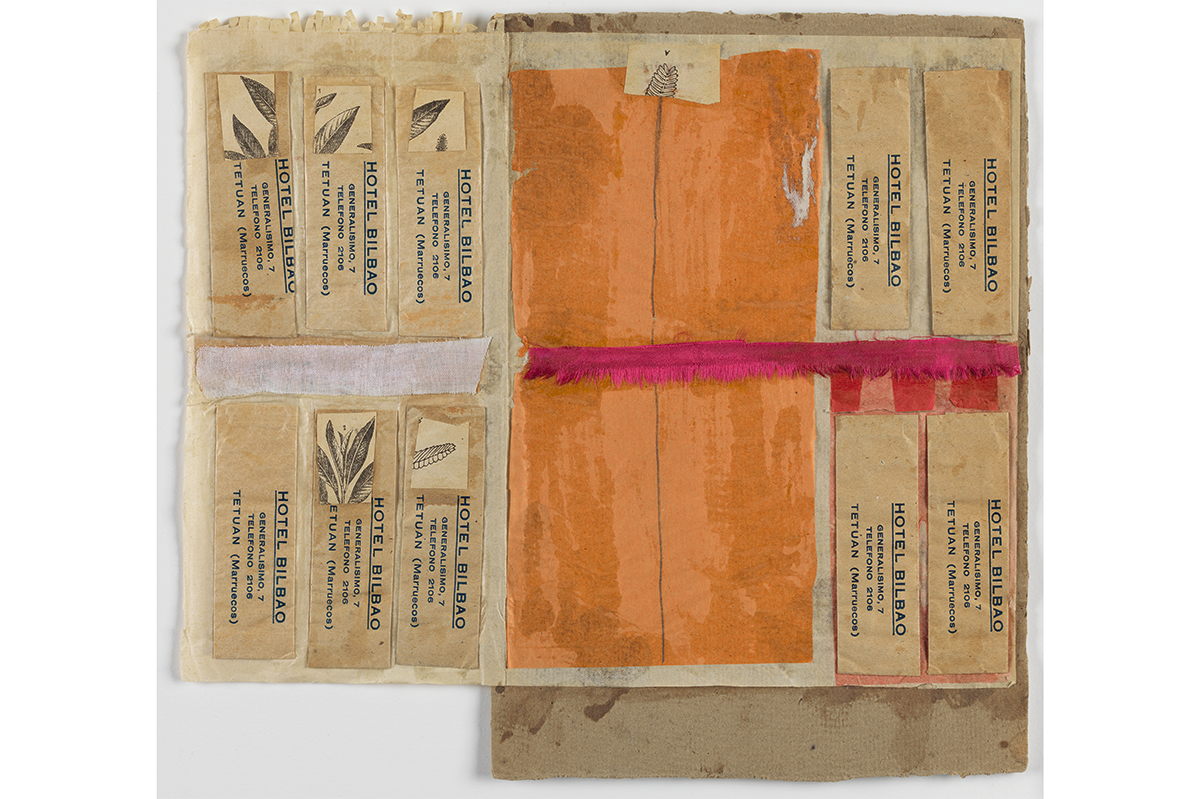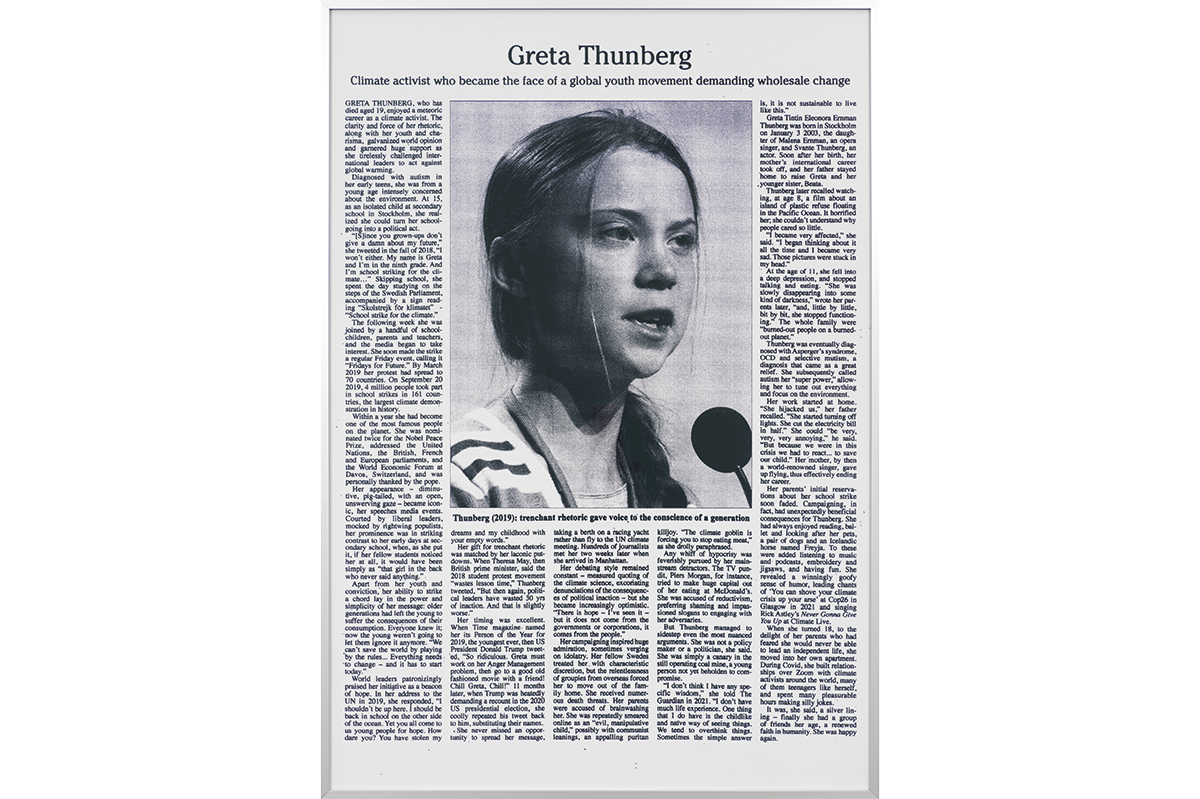We live at a time in which we could (until recently) travel without difficulty and take for granted access to cultural treasures. It’s easy to forget that this wasn’t always the case, and minds were shaped by what possibilities were available. The Belgian painter René Magritte is a good example of huge talent pushed through a very narrow opening. His art has now become an exemplar of the striking image that commerce can feature. Advertising regularly uses his paradoxical visual combinations of faces replaced by apples, of skies in the shape of doves, of roses filling rooms and, supremely, the conundrum of the pipe demurely labeled “Ceci n’est pas une pipe.”
In the case of some painters this might seem a diminishment, an ugly annexation of a larger whole. But with Magritte I’m not sure. His origins lie firmly in what he has become — commercial art, posters and even wallpaper designs — and he was most inspired by art when it came to him in reproduction. Much of his work was influenced by illustrations in the Larousse Universal Encyclopedia. The painting which made the greatest impact on him was Giorgio de Chirico’s “Le chant d’amour,” but he only saw it in a black-and-white version in the review Les Feuilles Libres in 1923. Did he ever see the painting itself, which passed from De Chirico’s studio into the Rockefeller collection? It’s not clear that he did; but it doesn’t seem to have been necessary. A bad black-and-white reproduction and the idea of it was enough for him.
This is, apparently, the first biography of Magritte. It’s curious that it’s taken so long, because his life exerts an uncanny fascination. He went to great trouble to maintain a surface existence of the utmost bourgeois respectability. He lived in a middle-class apartment in Brussels, painting in the corner of the dining room rather than in a studio. He married his childhood sweetheart, Georgette, whom he met when he was fourteen and she was twelve. With the usual, highly respectable additions of a midlife lover for her and regular visits to prostitutes for him, they remained happily married.
He kept his strong Walloon accent and his occasionally broad sense of humor. He liked respectable middle-class food. After two months staying with the English aesthete Edward James in the 1930s, he sent his wife a detailed list of the dinner he wanted on his return, and it is a little miracle of plain, bourgeois cooking, precisely indicated:
“4 hard-boiled eggs with anchovies
200 grams of prawns peeled by you, around the eggs, with a sliced tomato
50 grams of green olives, cut in half (the stones removed)
half a grated carrot
2 or 3 lettuce leaves
and mayonnaise”
The surface of precise middle-class respectability was strictly preserved, and though Magritte was generally associated with the surrealists, his relations with them were uneasy, and often made difficult by differences of social class, snobbery and his innate dislike of being dictated to or controlled. In one of his most productive periods, 1927-30, he and Georgette lived in Paris to make an impact on the advanced art of the time. A few superficial things got in the way. They chose to live not in a bohemian quarter but in the remote suburb of Le Perreux-sur-Marne. He was introduced to the surrealist circles of André Breton and Louis Aragon, but it is fair to say that they regarded Magritte as a provincial vulgarian, if they noticed him at all. Salvador Dalí apparently thought his name was Margueritte.
He was capable, in his respectable way, of going too far even for the surrealists. Few people visited Le Perreux-sur-Marne, but one was the poet Paul Éluard, who had previously undertaken the hopeless task of asking Magritte if he could change his accent to something more acceptable. Not anticipating what may have been an act of revenge, Éluard brought along his beautiful girlfriend, Alice Apfel. Magritte offered to paint her portrait on the spot; he did so, and the others took a walk while he finished the job. On returning, they found that Magritte had depicted Apfel immaculately, but had rendered her completely bald with a polished skull. Apfel “refused the portrait which Magritte so much wanted to give her. Éluard too.” The meeting was not a success.
The final rupture with the surrealists came in a highly characteristic form. Tensions had been growing between the Trotskyite main body and Magritte, who could see the point of making some money. In the taxi to a meeting, Éluard asked Georgette why she wore a crucifix, saying: “I’d rather wear a brick round my neck.” At the meeting, Breton, possibly prepared, announced: “There is one among us who is wearing something we abhor.” The highly respectable Georgette refused to remove her crucifix and Magritte led her out, never to return.
Yet there is much in Magritte that could hardly be more ostentatiously outrageous to any kind of conventional sensibilities. He was the son of a bluffeur, a chancer, and his life is full of episodes of striking opportunism. Late in his career, he accepted a commission from a casino for a huge mural, and mounted a large retrospective in the undignified setting. The famous “L’empire des lumières” exists in no fewer than sixteen oil versions, painted to meet popular demand among collectors (who often remained unaware of the duplicates).
Most astonishingly, Magritte’s associate, Marcel Mariën, revealed in a memoir of 1988, after Mme Magritte’s death, that Magritte had enjoyed a career forging paintings by Picasso and Klee among others, and had even forged banknotes. There were rumors of this during Magritte’s lifetime, but Mariën’s detailed account does seem to stand up. This is the Magritte who is glimpsed as a boy out on a balcony:
“What the hell are you doing, René?”
“I’ve got piles, my bum’s burning, I’m putting Vaseline on it.”
“On the balcony?”
“Where do you suggest I do it? The house is full. I’m not doing it in front of everyone.”
“I hate my past and that of others,” Magritte wrote when young. There seems no doubt that much of his art was designed to cover up what originated it, the trauma of his mother’s suicide by drowning when he was a boy; and investigation of the dazzling imagery, and the philosophy of the relation of word to object that underlies it, adds to the psychological puzzle. Not every child who witnesses the violent death of a parent grows up to be addicted to bloodthirsty thrillers of the most tawdry variety.
Alex Danchev’s posthumously published book — the final chapter was written by Sarah Whitfield from his notes — unpicks the philosophical basis thoughtfully and with real enlightenment. I would have enjoyed more investigation of the daily life of this most outwardly respectable of artists. Did the Magrittes have friends and associates beyond the world of art and manifestoes? If so, what did they think of him? It’s worth saying, too, that the biography is handsomely illustrated. Not every artist’s estate is generous enough to allow hundreds of reproductions, including nearly fifty in color.
The drama of thought is well explored, though Magritte leaves one, as always, with the nagging worry that art that reaches so emphatically for extra-painterly values, such as narrative or philosophical statement, always appeals strongly to contemporaries, but ages badly. Magritte was a precise but not always a very elegant painter, attached to some extraordinary philosophical conundrums, expressed with great clarity. We like him now — but does he face the fate of other philosophical or literary painters such as Greuze, Benjamin West and the sort of Victorians who depicted dramatic tableaux? For the moment, the conscious mind and philosophical engagement of the artist is worth exploring conscientiously, as Danchev has done. But the psychological drama of family and marriage and personality — what spurred it all into being — remains mysterious. It always will.
This article was originally published in The Spectator’s UK magazine. Subscribe to the World edition here.



